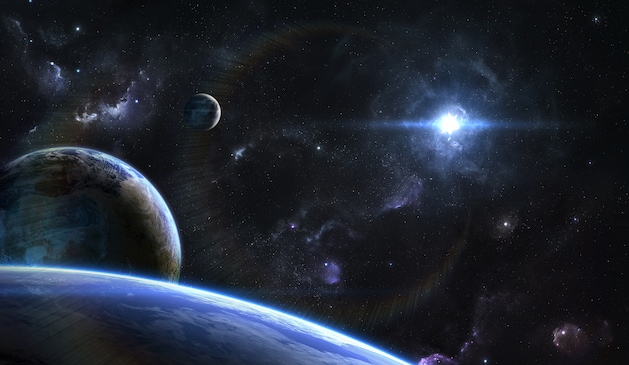Apparently, researchers have discovered an Earth-like exoplanet that may be able to support human life. This planet shows signs of having the right conditions for the presence of water.
NASA scientists have discovered an Earth-like planet that could have the potential to support human life. As the Daily Mail reports, the exoplanet is smaller than Earth and is located about 40 light years away.
According to current research, the planet “Gliese 12 b” is said to lie just within the habitable zone, a distance from a star at which liquid water could exist on the surfaces of orbiting planets.
According to the Daily Mail, astronomers now plan to analyze Gliese 12 b more closely to determine whether an Earth-like atmosphere is actually present. This could provide information about whether the exoplanet can maintain the right temperature for water to form on its surface – an essential prerequisite for the survival of life.
The exoplanet Gliese 12 b has been labeled as a “nearest transitive temperate Earth-sized planet” and is on the list for future studies by NASA’s $9.5 billion James Webb Space Telescope.
An international team of astronomers discovered the planet using NASA’s TESS (Transiting Exoplanet Survey Satellite). Such discoveries are usually made using the “transit method,” in which the planet passes in front of its star, causing a dimness in its brightness.
According to the researchers, Gliese 12 b has a tighter orbit than Earth, meaning it crosses its cool red dwarf star, Gliese 12, more often, completing one orbit in 12.8 days, according to the Daily Mail.
“Gliese 12 b represents one of the best targets to study whether Earth-sized planets orbiting cool stars can retain their atmospheres,” said Shishir Dholakia, a PhD student at the Center for Astrophysics at the University of Southern Queensland in Australia. This is a crucial step in expanding our understanding of the habitability of planets in our galaxy.
However, the planet’s habitable conditions depend on whether it has the same type of atmosphere as Earth, which would bring its temperature closer to the average 15 degrees Celsius on our planet.
Gliese 12 b is not the only planet that has caught the attention of researchers. “We only know of a handful of temperate planets similar to Earth that are both close enough to us and meet other criteria necessary for this type of study,” says Michael McElwain, a research astrophysicist at NASA’s Goddard Space Flight Center and co-author of the Gliese 12 b study.
Scientists have already discovered about 5,000 of these planets, but estimate that there are probably over a trillion exoplanets in the Milky Way. Only a few of them have so far been classified as potentially habitable.
Last year, a research team from Japan proposed the existence of a hypothetical ninth planet in our solar system. The researchers based their assumptions on the orbits of trans-Neptunian objects that orbit the sun outside the orbit of the planet Neptune. Despite the plausible theoretical basis, the “Kuiper Belt Planet” has not yet been discovered.
In the Erzgebirge district, around 1,000 Ukrainian refugees are urgently looking for accommodation. A letter from the district administration office is asking them to vacate their current apartments by mid-June.
The number of failures in driving tests has reached a new record high. A driving instructor now reveals why he thinks this is the case.


